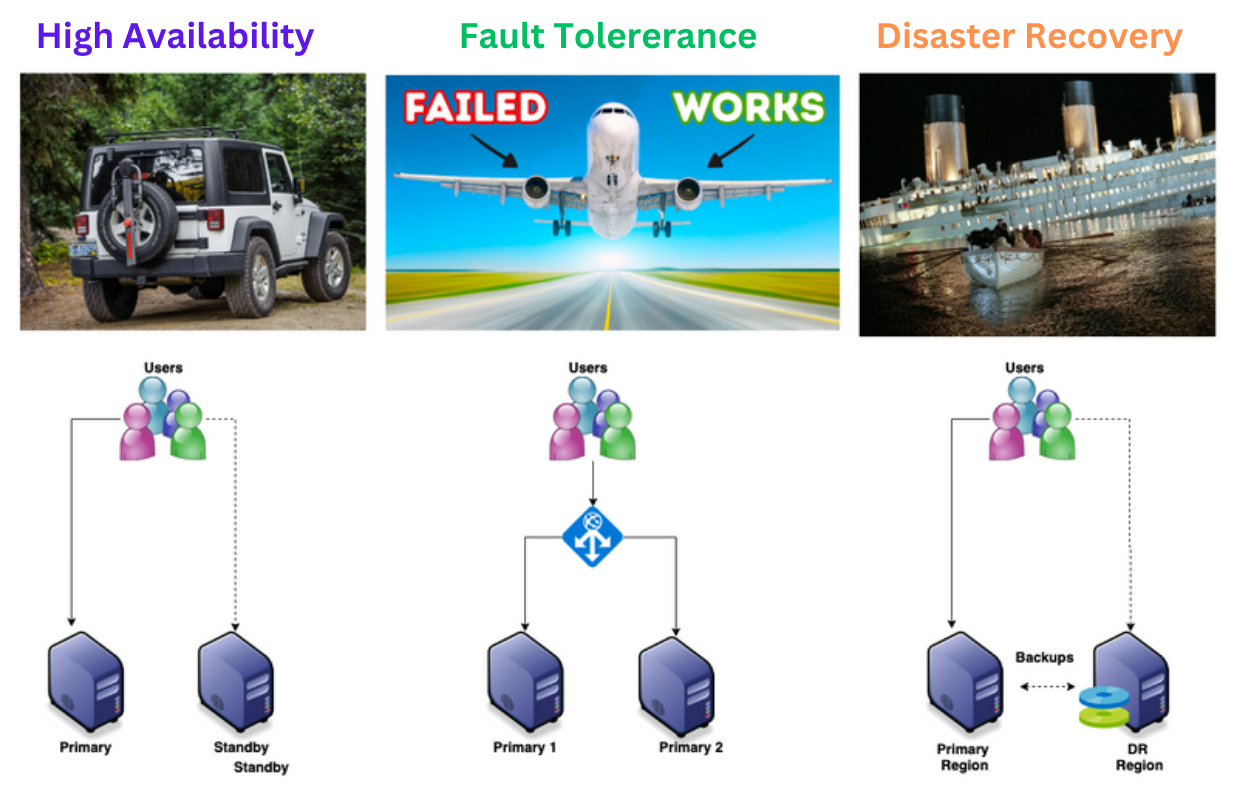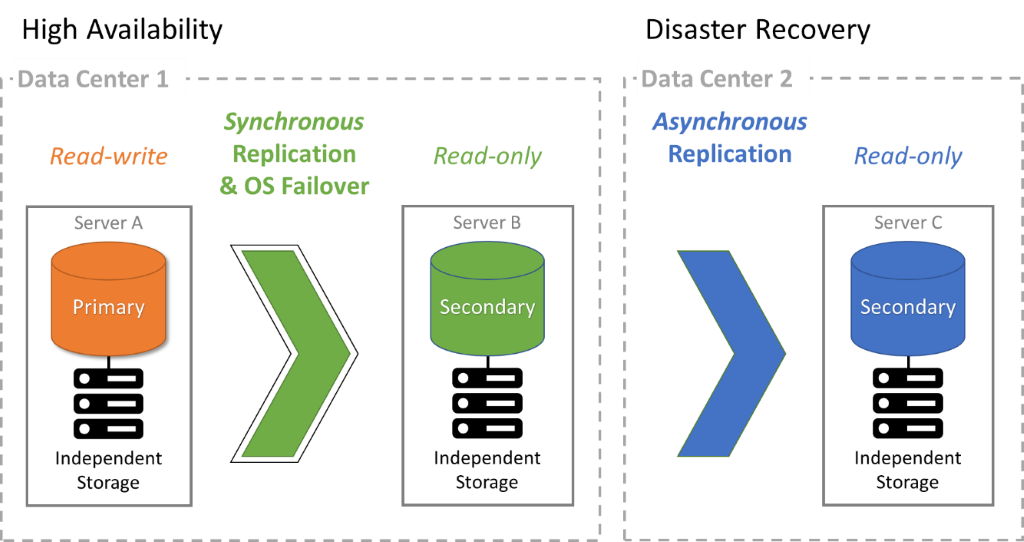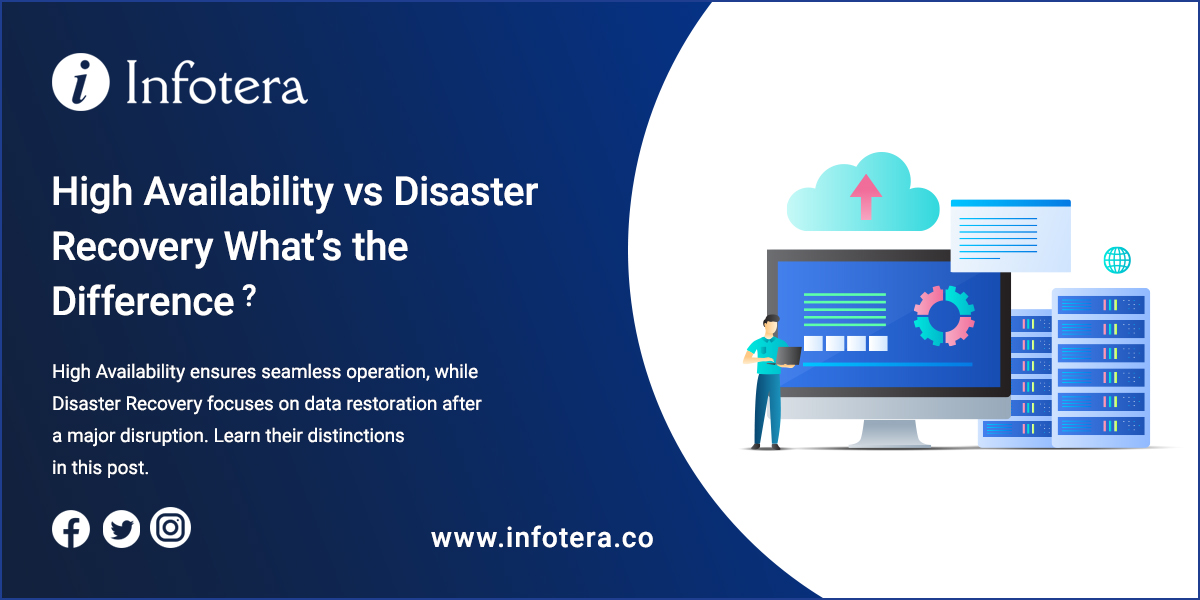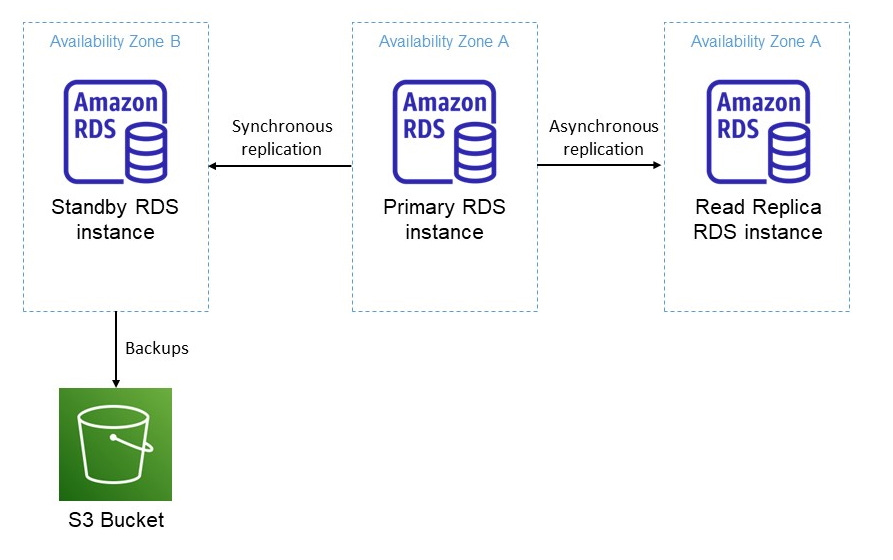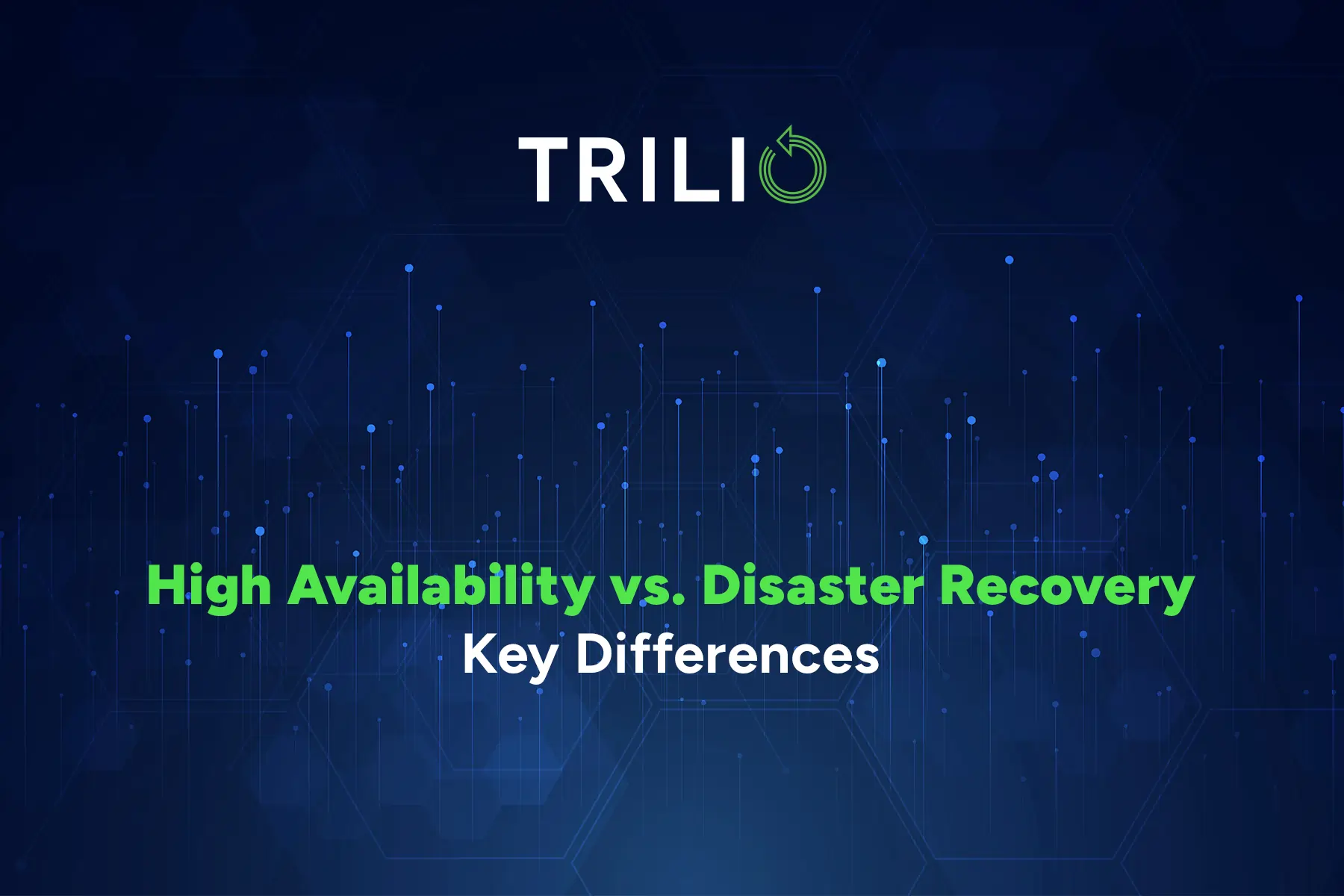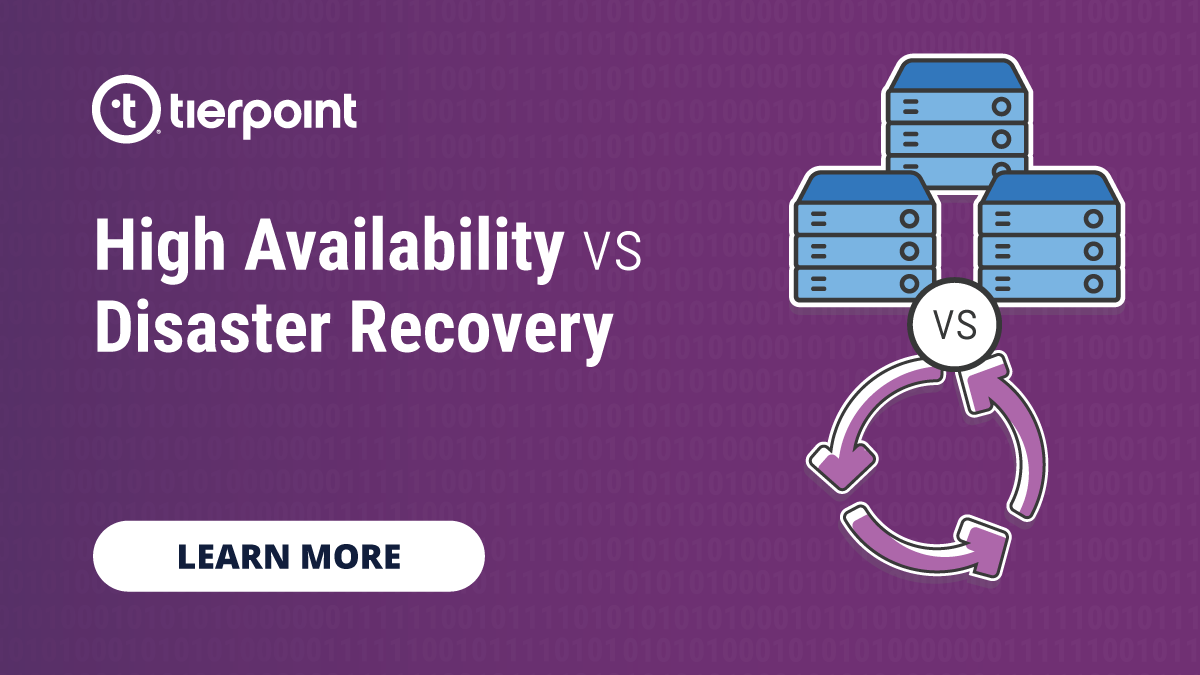Disaster Recovery Vs High Availability
Disaster Recovery Vs High Availability - High availability (ha) refers to a system's ability to remain operational and accessible even when one or more of its. However, availability focuses on components of the workload, whereas disaster recovery focuses on discrete copies of the entire workload. While high availability focuses on preventing downtime through redundancy and automated failover, disaster recovery provides.
While high availability focuses on preventing downtime through redundancy and automated failover, disaster recovery provides. However, availability focuses on components of the workload, whereas disaster recovery focuses on discrete copies of the entire workload. High availability (ha) refers to a system's ability to remain operational and accessible even when one or more of its.
While high availability focuses on preventing downtime through redundancy and automated failover, disaster recovery provides. High availability (ha) refers to a system's ability to remain operational and accessible even when one or more of its. However, availability focuses on components of the workload, whereas disaster recovery focuses on discrete copies of the entire workload.
High Availability vs. Fault Tolerance vs. Disaster Recovery
While high availability focuses on preventing downtime through redundancy and automated failover, disaster recovery provides. However, availability focuses on components of the workload, whereas disaster recovery focuses on discrete copies of the entire workload. High availability (ha) refers to a system's ability to remain operational and accessible even when one or more of its.
Cloud Architecture 101 High Availability vs Fault Tolerance vs
While high availability focuses on preventing downtime through redundancy and automated failover, disaster recovery provides. However, availability focuses on components of the workload, whereas disaster recovery focuses on discrete copies of the entire workload. High availability (ha) refers to a system's ability to remain operational and accessible even when one or more of its.
High Availability and Disaster Recovery
However, availability focuses on components of the workload, whereas disaster recovery focuses on discrete copies of the entire workload. High availability (ha) refers to a system's ability to remain operational and accessible even when one or more of its. While high availability focuses on preventing downtime through redundancy and automated failover, disaster recovery provides.
High Availability vs Disaster Recovery What’s the Difference?
However, availability focuses on components of the workload, whereas disaster recovery focuses on discrete copies of the entire workload. While high availability focuses on preventing downtime through redundancy and automated failover, disaster recovery provides. High availability (ha) refers to a system's ability to remain operational and accessible even when one or more of its.
High Availability vs Fault Tolerance vs Disaster Recovery Explained
While high availability focuses on preventing downtime through redundancy and automated failover, disaster recovery provides. However, availability focuses on components of the workload, whereas disaster recovery focuses on discrete copies of the entire workload. High availability (ha) refers to a system's ability to remain operational and accessible even when one or more of its.
High Availability vs. Disaster Recovery Key Differences
While high availability focuses on preventing downtime through redundancy and automated failover, disaster recovery provides. High availability (ha) refers to a system's ability to remain operational and accessible even when one or more of its. However, availability focuses on components of the workload, whereas disaster recovery focuses on discrete copies of the entire workload.
Comparing High Availability Vs Fault Tolerance Vs Disaster Recovery
However, availability focuses on components of the workload, whereas disaster recovery focuses on discrete copies of the entire workload. High availability (ha) refers to a system's ability to remain operational and accessible even when one or more of its. While high availability focuses on preventing downtime through redundancy and automated failover, disaster recovery provides.
High Availability vs. Disaster Recovery What's the Difference
High availability (ha) refers to a system's ability to remain operational and accessible even when one or more of its. While high availability focuses on preventing downtime through redundancy and automated failover, disaster recovery provides. However, availability focuses on components of the workload, whereas disaster recovery focuses on discrete copies of the entire workload.
High Availability vs Disaster Recovery TierPoint, LLC
High availability (ha) refers to a system's ability to remain operational and accessible even when one or more of its. While high availability focuses on preventing downtime through redundancy and automated failover, disaster recovery provides. However, availability focuses on components of the workload, whereas disaster recovery focuses on discrete copies of the entire workload.
High Availability vs Disaster Recovery What's the Difference?
High availability (ha) refers to a system's ability to remain operational and accessible even when one or more of its. However, availability focuses on components of the workload, whereas disaster recovery focuses on discrete copies of the entire workload. While high availability focuses on preventing downtime through redundancy and automated failover, disaster recovery provides.
While High Availability Focuses On Preventing Downtime Through Redundancy And Automated Failover, Disaster Recovery Provides.
High availability (ha) refers to a system's ability to remain operational and accessible even when one or more of its. However, availability focuses on components of the workload, whereas disaster recovery focuses on discrete copies of the entire workload.

